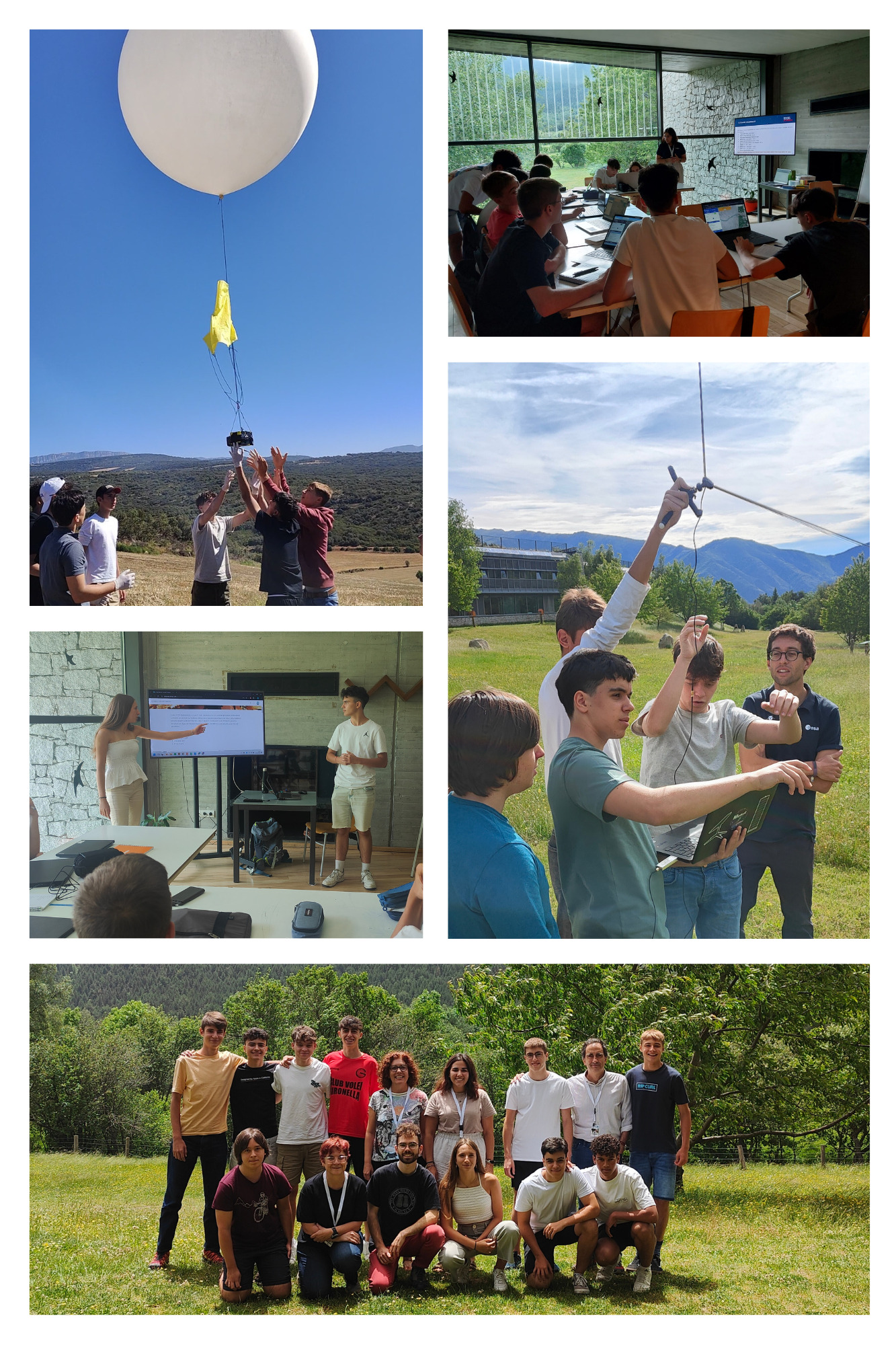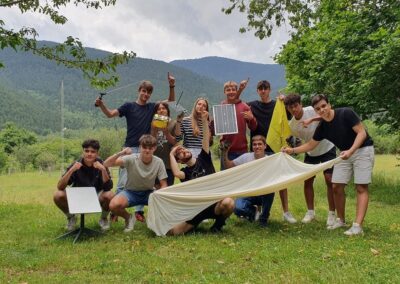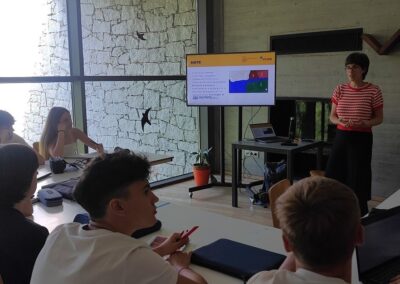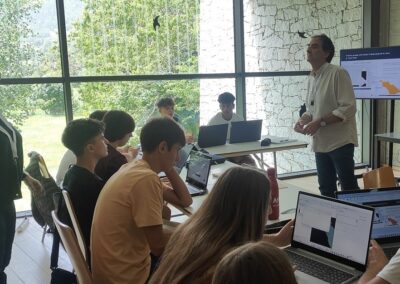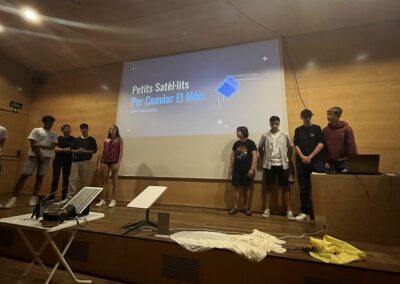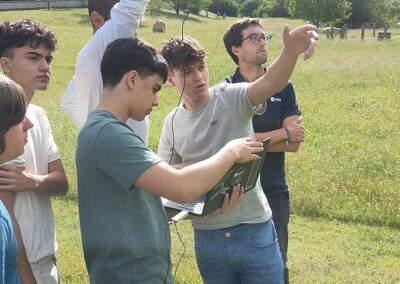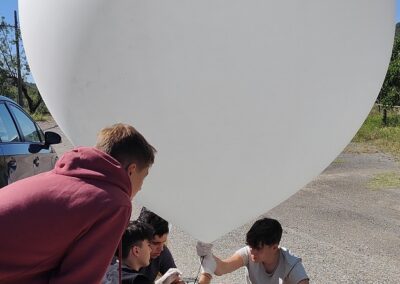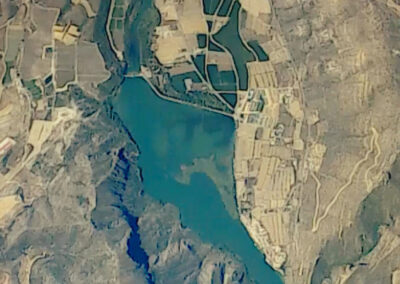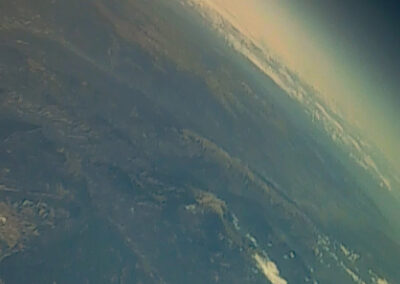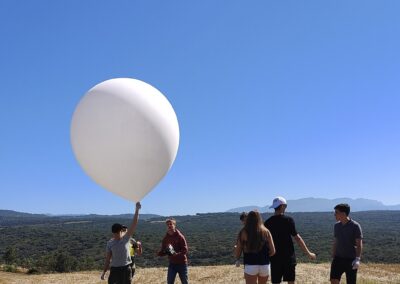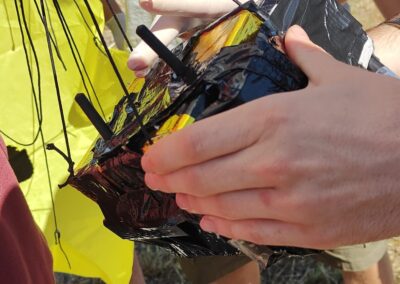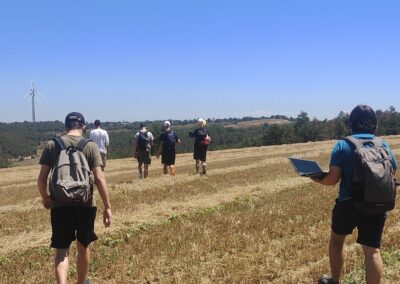The IEEC and the ‘Youth and Science’ programme bring the world of space and satellites to young Catalans
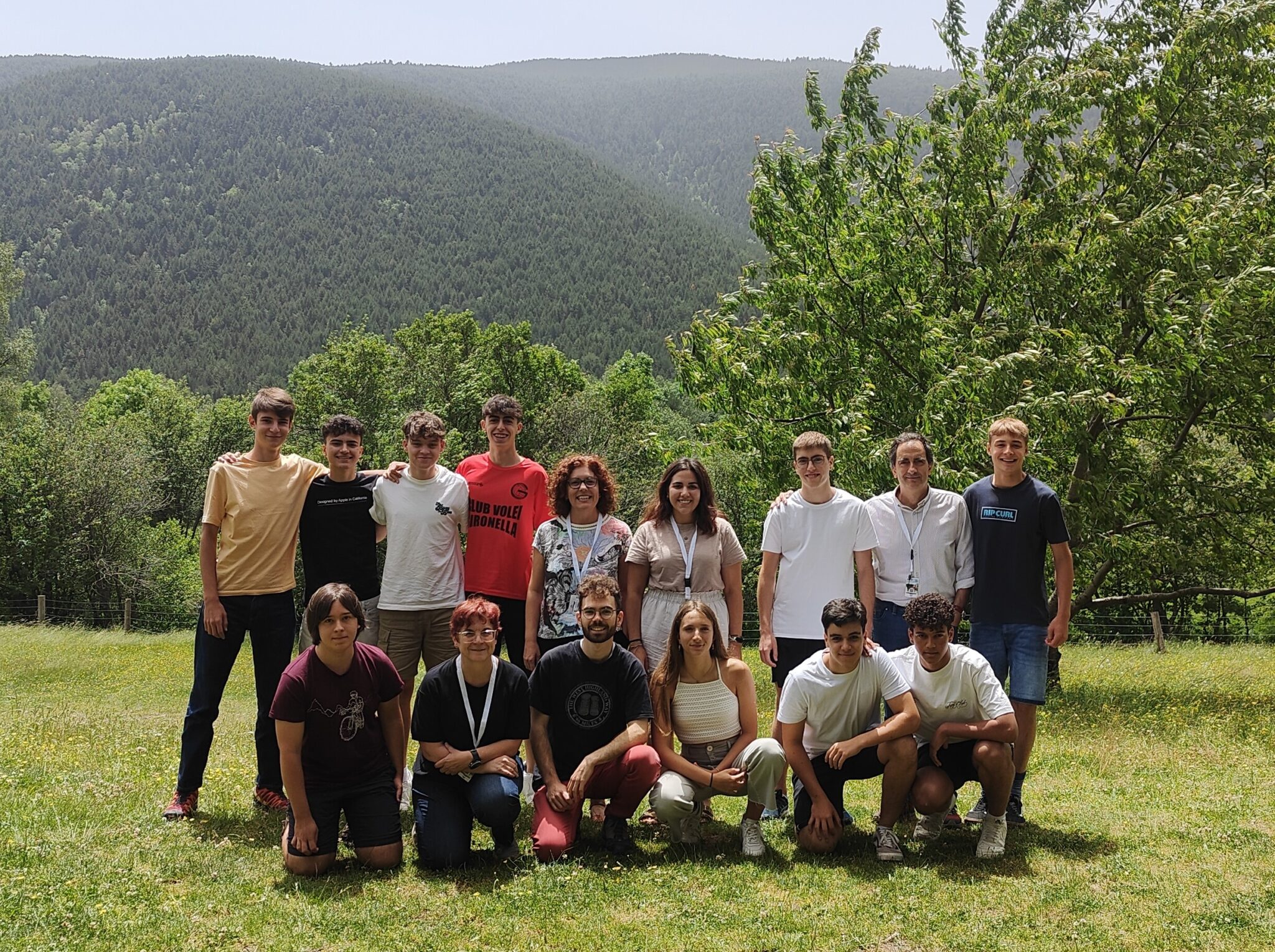
The project ‘NewSpace: Small satellites to change the world’ immersed 10 young people from 4th ESO in the world of space for two weeks (from 25 June to 7 July). The initiative, which is part of the Catalunya La Pedrera Foundation’s ‘Youth and Science’ programme to promote scientific vocations, aims to provide an overview of the opportunities offered by space and the various applications of nanosatellites through a series of workshops, talks and activities.
A team from the Institute of Space Studies of Catalonia (IEEC — Institut d’Estudis Espacials de Catalunya) accompanied the students at all times in this experience, organised this year at the MónNatura Pirineus centre. The activity is framed within the Talent and Society axis of the NewSpace Strategy of Catalonia promoted by the Government of Catalonia, and has had the collaboration of the i2CAT Foundation and the association GoSTEM.
Thus, the first block of the project allowed participants to explore NewSpace and Earth observation, with a presentation on the NewSpace Strategy of Catalonia and basic knowledge about cameras and sensors for Earth observation, as well as the various platforms and satellites that are used.
The week continued with a workshop of the Geographic Information Systems and Remote Sensing Service (SIGTE) of the University of Girona where real use cases of Earth observation were shown and related tools and resources were introduced. To conclude this part, the Cartographic and Geological Institute of Catalonia (ICGC) held a workshop with several Earth observation activities using tools employed at the Institute.
The second block of the programme was dedicated to communications with a presentation of its applications and technologies as well as practical sessions with the Internet of Things (IoT) and satellite navigation systems (GNSS). Participants learned about concepts such as triangulation and connected to a real satellite constellation.
The third block focused on designing, building, verifying and launching two ‘analog’ missions (simulations of missions in real conditions) of nanosatellites with different objectives. The participants applied the knowledge acquired during the previous days to launch a High Altitude Balloon (HAB) with all its subsystems.
After analysing the probe’s flight data and drawing the appropriate conclusions, the participants presented their project with the results obtained. They also shared their experiences and learnings with their peers from the other Youth and Science projects, families and teaching and research staff.
During the stay, the students also enjoyed talks from various associations and organisations, such as SPASCAT, SENER, WIA-Europe Barcelona, Cosmic Research and Hypatia Mars Association, among many others.
This is the end of the first phase of the Youth and Science project for these students. Next summer they will enjoy a stay in a research centre in Catalonia to continue discovering the world of aerospace research.
